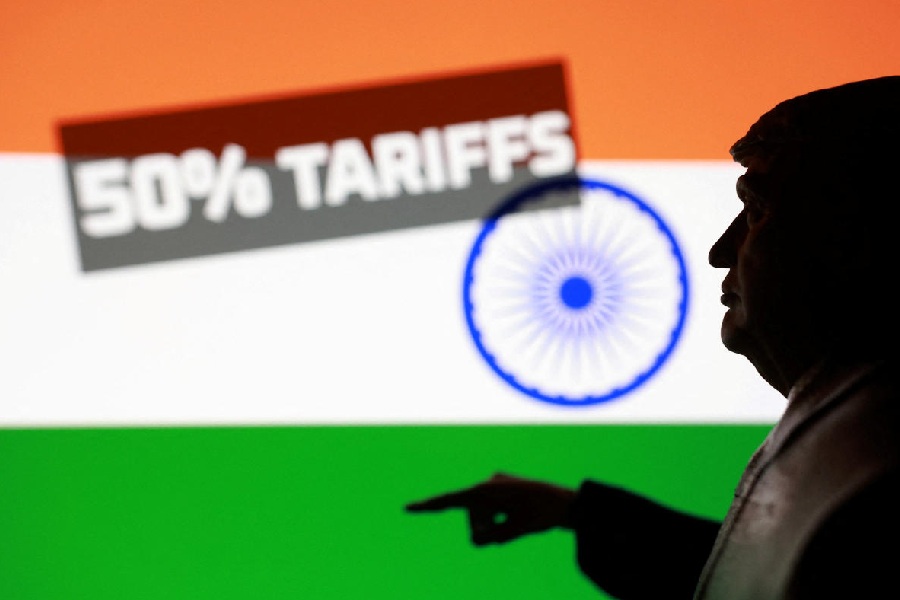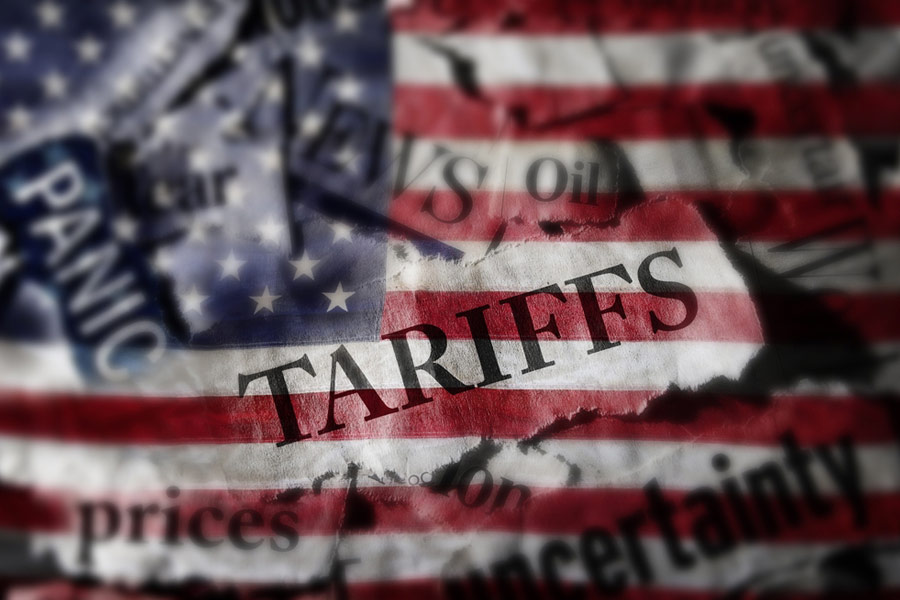The United States’ decision to impose steep 50 per cent tariffs on Indian goods entering its market has left exporters across sectors staring at cancelled orders, factory closures, and large-scale job losses.
Exporter groups estimate the tariffs could affect nearly 55 per cent of India's $87 billion in merchandise exports to the US, while benefiting competitors such as Vietnam, Bangladesh and China.
The apparel industry, which exported $10.3 billion worth of textiles last year, is among the worst-hit.
Mithileshwar Thakur, secretary-general, Apparel Export Promotion Council (AEPC), said: “The industry was reconciled to the 25 per cent reciprocal tariff announced by the USA, as it was prepared to absorb a part of the tariff increase. But, the additional burden of another 25 per cent has effectively driven the Indian apparel industry out of the US market as the gap of 30-31 per cent tariff disadvantage vis-a-vis major competing countries like Bangladesh, Vietnam, Sri Lanka, Cambodia and Indonesia is impossible to bridge.”
A leather exporter added that companies with orders for the next two to three months are already under pressure.
“Considering the 50 per cent tariff for India, if the discount is not accepted, orders are kept fully on hold or cancelled. Also, if a discount is not given, no new orders will be placed,” he said, warning that firms anticipate a 50 per cent reduction in workforce due to the loss of business.
The diamond and jewellery sector, heavily dependent on the US, is equally alarmed.
“For cut and polished diamonds, half of India’s exports are US-bound. With this tariff hike, the entire industry may come to a standstill, placing immense pressure on every part of the value chain, from karigars (artisans) to large manufacturer,” said Gems and Jewellery Export Promotion Council (GJEPC) chairman, Kirit Bhansali.
He added that competing hubs such as Turkey, Vietnam and Thailand would gain, making Indian exports less competitive.
Saiyam Mehra, chairman, All India Gem & Jewellery Domestic Council, said, “As of now, more than 1,75,000 workers who are already employed in Surat, Zaveri Bazaar and some places in Calcutta, are also going to be affected by this. However, we as manufacturers and wholesalers have made alternate routes by increasing our marketing throughout all the states in India, in the UAE, Saudi Arabia, Qatar and other markets also which we are looking at.”
Seafood exporters say Indian shrimp is now priced out of the US market.
“We are already facing huge competition from Ecuador, as it has only a 15 per cent tariff. Indian shrimp already attracts a 2.49 per cent anti-dumping duty and a 5.77 per cent countervailing duty. After this 50 per cent, the duty will be significantly high,” said a Kolkata-based shrimp exporter.
There was no domestic market reaction on Wednesday as the stock exchanges were closed for a Ganpati festival but equity benchmarks logged their worst session in three months on Tuesday.
Economists have said while the repercussions would be bruising, it may not be all gloom and doom if New Delhi can further reform its economy and become less protectionist while seeking to resolve the crisis with Washington.
Rajeswari Sengupta, an economics professor at Mumbai's Indira Gandhi Institute of Development Research, said allowing the rupee to "depreciate is one way to provide indirect support to exporters" and regain lost competitiveness.
The rupee continued its losing streak for a fifth consecutive session on Tuesday, ending at its lowest level in three weeks.
"Up to 2 million jobs are at risk in the near term," said Sujan Hajra, chief economist at the Anand Rathi Group. "Yet the bigger picture is less gloomy: India's export base is diversified, its corporate earnings and inflation outlook remain intact, and domestic demand is robust enough to cushion the blow.”
Economic think tank Global Trade Research Initiative (GTRI) estimates that the new tariff regime will hit 66 per cent of India’s exports to the US.
“.. marks one of the most severe trade shocks India has faced in recent years. With over two-thirds of India’s $ 86.5 billion exports to the US now subject to prohibitive 25-50 per cent duties, critical labour-intensive sectors such as textiles, gems and jewellery, shrimp, carpets, and furniture face sharp declines in competitiveness and employment,” said GTRI Founder Ajay Srivastava.
He projected that India’s exports to the US will fall to about $ 49.6 billion in FY2026.
Industry bodies are looking to expand to new markets.
CTA Apparels Chairman Mukesh Kansal said, “It is very unfortunate. Indian exporters should look for alternative markets, which is not an easy task. In markets like Africa and China, the price of selling is very low."
"It is not a viable solution for exporters. Therefore, we must focus on reducing costs so that we can absorb some of the additional tariffs and duties and remain competitive. Problems will increase, and business will decline. I think within the next six months, things will become normal,” Kansal added.
Chairman of Indian Diamond Institute, Dinesh Navadiya, said, "India's FTAs with the UK, UAE and Australia will help us find new markets. China and Russia have said that they will open their markets to India, which might prove to be a positive for us.”
Jayesh Patel, diamond manufacturer and trader, said, “Since the US is a very large market, we may face some challenges due to tariffs; however, there are also European nations and Russia where we can sell… If this continues, we might have to scale down our business and find markets in other countries.”



